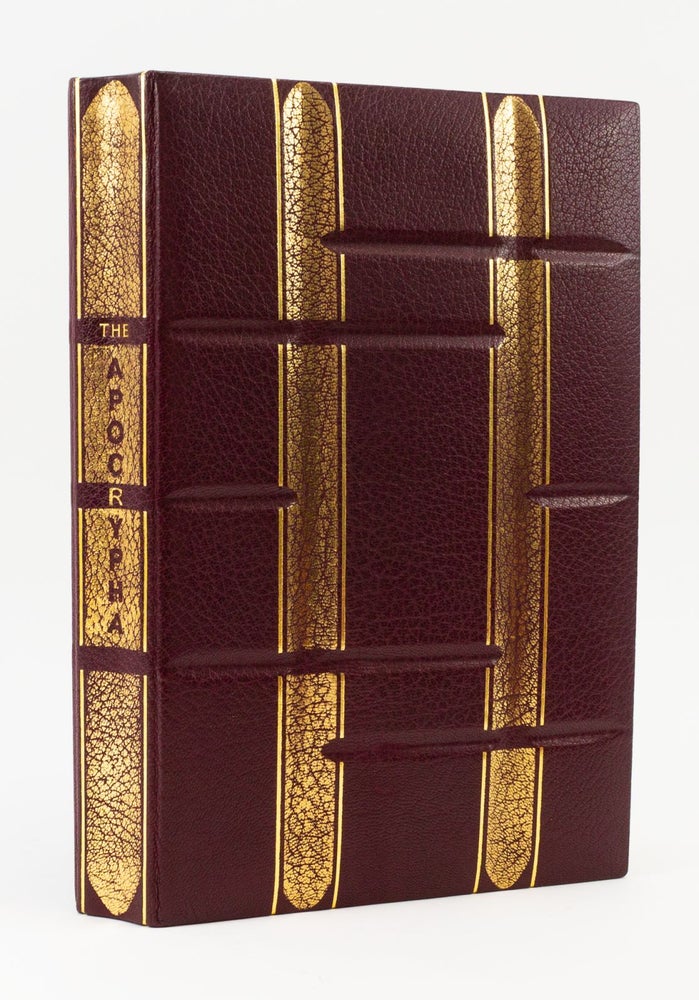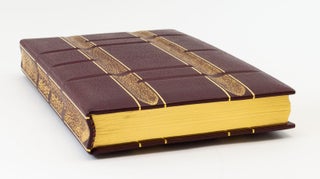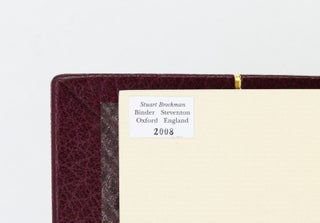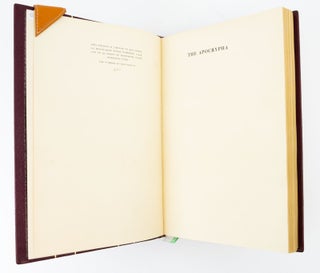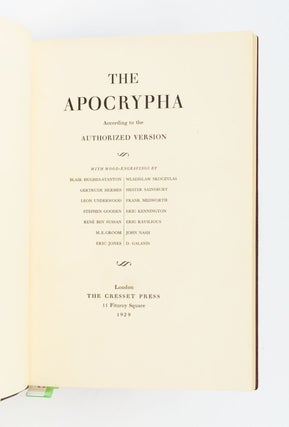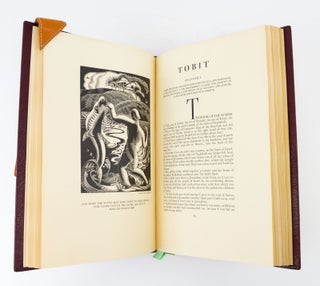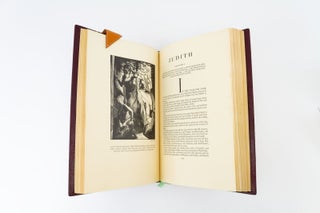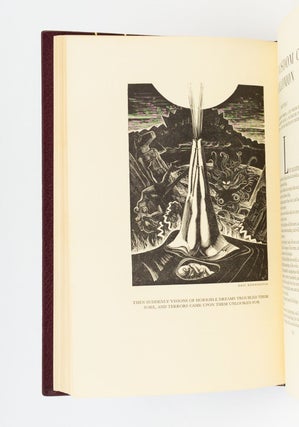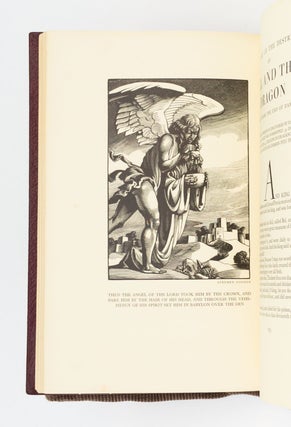THE APOCRYPHA.
(London: [Printed by The Curwen Press for] Cresset Press, 1929). 330 x 210 mm. (13 x 8 1/4"). 5 p.l., 406 pp., [1] leaf. No. 401 OF 450 COPIES (and 30 copies on handmade paper).
IMPRESSIVE BURGUNDY CRUSHED MOROCCO BY STUART BROCKMAN (his ticket, dated 2008, on verso of front free endpaper), covers with two wide, parallel, vertical grooves lightly brushed with gold that leaves the burgundy grain of the leather visible, half a dozen shorter horizontal grooves intersecting the vertical design, concave spine brushed with gold, stencilled titling, silvery lilac endpapers, all edges gilt. In a black morocco-backed clamshell box lined with burgundy velvet. With 14 woodcuts, each by a different artist, among them Blair Hughes-Stanton, Gertrude Hermes, John Nash, Eric Ravilious, and Stephen Gooden. Front pastedown with bookplate of Alice Steelman Witherow. Ransom, p. 7; Hughes-Stanton 6. ◆Isolated faint spots of foxing to margins, but a very fine copy, clean and fresh, in an unworn binding.
This is a powerfully attractive book that combines three prominent features: fine letterpress printing done by a notable printing house for an important private press, dramatic woodcuts by prominent artists of the time, and, most notably, a striking binding by a Designer Bookbinder. The son of master bookbinder James Brockman, Stuart Brockman (b. 1972) received an Honours Degree in Mechanical Engineering from Imperial College London before joining the family bindery in 1995. He was elected a Licentiate of Designer Bookbinders in 1999 and a Fellow in 2004. His designs are innovative and often employ unexpected elements or techniques like the deep grooves and concave spine here. "The Apocrypha" features the work of 14 artists, many of them admired wood engravers: Blair Hughes-Stanton, Gertrude Hermes, John Nash, Stephen Gooden, Eric Ravilious, René Ben Sussan, Frank Medworth, Leon Underwood, Eric Kennington, Mary Elizabeth Groom, Wladislaw Skoczylas, Hester Sainsbury, Eric Jones, and D. Galanis. The text is well printed with vast margins, and the plates are memorable because they provide a sampling of the range of images being produced at the time by the best artists at work in the woodcut medium. According to Ransom, the Cresset Press, which operated between 1927 and 1931 under the direction of Dennis M. Cohen and A. I. Meyers, had three aims: "the production of fine editions; the reprinting in an attractive, though not necessarily expensive, format of certain of the classics now difficult to obtain; and finally, the production of contemporary or other works of undisputed or artistic value." Although the Curwen Press was founded (under a different name) in 1863, it became an important press in the world of private printing in 1914, when Harold Curwen (1885-1949), the grandson of the original founder, took control. In 1921, Oliver Simon (1895-1956) joined the firm, and he was instrumental in upgrading the quality of book production, in part by commissioning typefaces, illustrations, and decorations from, among others, Jan Van Krimpen, Rudolf Koch, Edward Bawden, Paul Nash, and Graham Sutherland (Lovat Fraser was already working for the press when Simon came in). Glaister says that "The brilliantly successful association of Curwen and Simon led to a steady flow of fine books as well as jobbing printing of outstanding quality." (ST17613)
Price: $4,000.00

